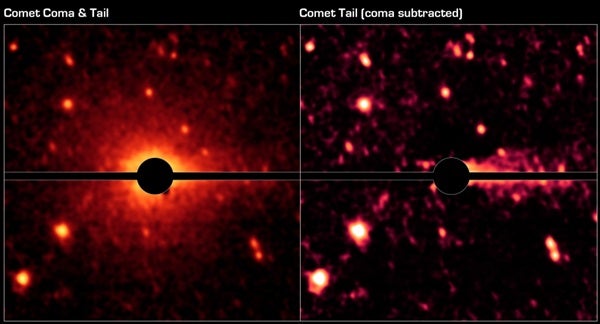The discovery resulted from an ongoing project coordinated by researchers at Northern Arizona University in Flagstaff, Arizona, who are using NASA’s Spitzer Space Telescope. Through focused attention and a little luck, they found evidence of cometary activity, which had evaded detection for three decades.
Their results show that Don Quixote is not, in fact, a dead comet, as previously believed, but that it has a faint coma and tail. In fact, this object, the third-biggest near-Earth asteroid known, skirts Earth with an erratic, extended orbit, and is “sopping wet,” said David Trilling of Northern Arizona University, with large deposits of carbon dioxide and presumably water ice. Don Quixote is about 11 miles (18 kilometers) long.
“This discovery of carbon dioxide emission from Don Quixote required the sensitivity and infrared wavelengths of the Spitzer telescope and would not have been possible using telescopes on the ground,” said Michael Mommert of Northern Arizona University. This discovery implies that carbon dioxide and water ice might be present on other near-Earth asteroids, as well.
The implications have less to do with a potential impact, which is extremely unlikely in this case, and more with “the origins of water on Earth,” Trilling said. Impacts with comets like Don Quixote over geological time may be the source of at least some of it, and the amount on Don Quixote represents about 100 billion tons of water — roughly the same amount that can be found in Lake Tahoe, California.










